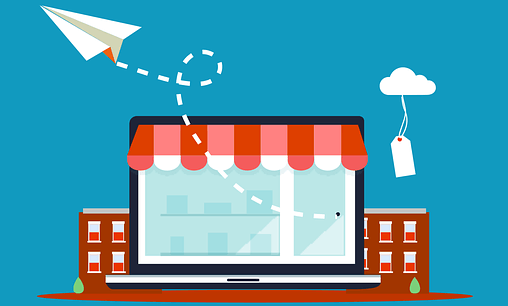What is Headless Commerce?
September 16, 2020

What is Headless Commerce?
Since the Covid pandemic brought a lot of challenges to the business world, one of the main issues we had to tackle were things like engaging customers through new mediums, extending a business online, while also bringing more flexibility. That’s what headless e-commerce managed to bring to the table, and in some cases, it allowed businesses to grow and expand more than they imagined.
What is headless commerce?
At its core, headless commerce separates the backend and frontend of an ecommerce application. The reason why this matters is because once it uses the headless method, a retailer can provide a better user experience and rich content via the frontend without over-encumbering the backend with unnecessary features. The added flexibility that comes from headless commerce can easily be adapted by every retailer in their own way. Some retailers can have brand-focused websites or content focused websites. The frontend and backend are de-coupled, and instead the headless method relies on API calls to acquire the information. What this does is it makes it easier for developers to fully adapt and customize websites the way they want. There’s no heavy reliance on code anymore, which can make a huge difference in a situation like this.
How does the headless commerce approach affect your customers?
The great advantage that comes with headless commerce is the fact that every update is instant. You don’t have to worry for the update to be adjusted to the website manually. If you make any frontend changes, all of them take place right away. Moreover, thanks to the de-coupling approach, developers tend to focus more on the visual approach and features, bringing in rich user interfaces and a better user experience as a whole. You can experiment more, which means to a more interesting, innovative and creative.
How can you get started with headless commerce?
What you will like about headless commerce is the fact that you have all the tools and APIs that a developer needs already provided by the ecommerce platforms. This way the developers can focus on the functional and performance aspects, whereas creative teams can optimize the UI and enhance the customer engagement rate. By having teams working separately at any time, there’s less overlapping, and you are able to experiment a lot more. With headless commerce you get a much better third-party integration, coding, tool autonomy and API implementation. This is a great way to stand out of the crowd and provide your customers with the latest innovations in the industry.
Advantages
The frontend is only focused on content delivery Every change takes place almost instantly There’s more formatting and design flexibility A cleaner interface that’s easier to expand Less overhead Cleaner architecture Disadvantages In some cases, you can lose platform functionality You have to maintain 2 systems The cost of ownership can increase Conclusion As you can see, headless commerce is one of the best methods you can use in order to surpass your competitors and come up with creative solutions for customers. It’s an amazing way to expand your online business fast, by enhancing the customer experience while also developing new features and experimenting with ideas. Don’t hesitate and give headless e-commerce a try if you are interested in standing out as a company while delivering state of the art products and services!
Headless Commerce Websites
Walmart Amazon Best Buy J. Crew Michael Kors Ebay Eurail Icelandair Princess Cruises Coca Cola Etsy Uber Spotify Netflix Zalando